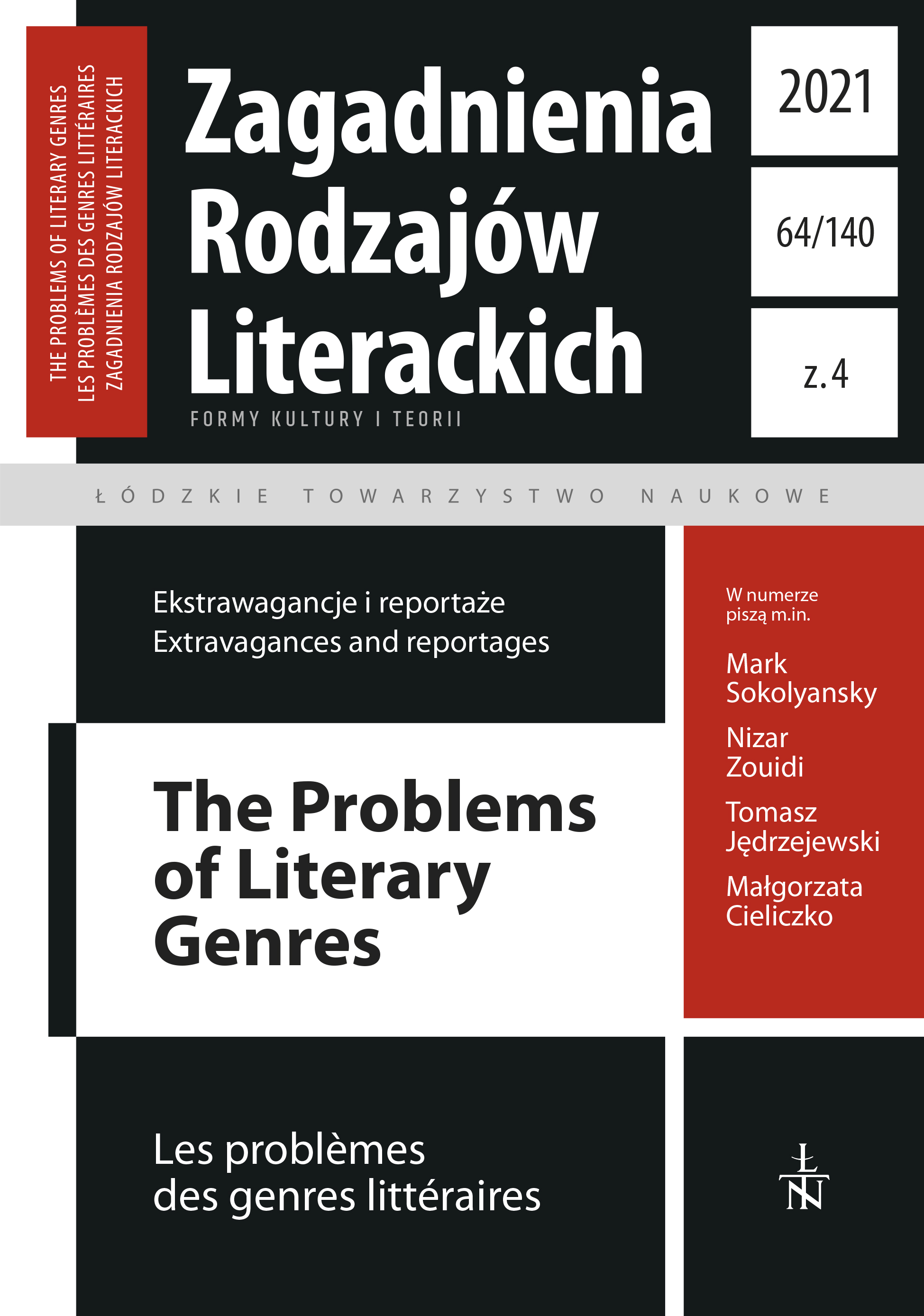A Sleight of Mind: The Idea of Magic and the Narrative Structure of A Christmas Carol by Charles Dickens
DOI:
https://doi.org/10.26485/ZRL/2021/64.4/3Keywords:
Victorian, Dickens, performance, magic, narrativeAbstract
The nineteenth century was an age of reason and industrialization. Magic and mythical creatures ceased to exist for the rational minds of the time. Yet, despite the intellectual hostility to magic and mysticism, their sway over popular culture and the literary world remained undisturbed. Magic even found other ways to return. One of these is stage magic. In the 1840s, the stage magician John Henry Anderson dazzled the audiences in London with his performances so much so that Sir Walter Scott called him the Great Wizard of the North (referring to his Scottish origins). In A Christmas Carol, Dickens adds vivacity to his narrative through the use of narrative theatrics that can be described as pertaining to stage magic. In the novella, a ludicrous form of white magic transforms the main character. The other characters are baffled by the inexplicable change in his behaviors. The transformation seems magical even to them. While hidden from their eyes, Scrooge receives four strange night visitors who reform him through a series of visions. When he finally returns to the “real” world, Scrooge is a different person. What takes place in the novella can in many respects be compared to the tricks used in stage magic (where an item is hidden from the sight of the spectators only to reappear in a different form). The use of magic in the novella, therefore, goes beyond the story. Indeed, a “magical” sleight of mind structures the very narrative of A Christmas Carol. This paper seeks to trace the influence of the idea of magic on the narrative structure and techniques of Dickens’ novella. It argues that, in many respects, the narrator can be described as a magician performing tricks on characters and readers alike.
References
Bell Karl (2009), Remaking Magic: The “Wizard of the North” and Contested Magical Mentalities in the Mid-Nineteenth Century, “Magic, Ritual and Witchcraft”, vol. 4, no. 1.
Bloom Harold (2002), Genius: A Mosaic of One Hundred Exemplary Creative Minds, Warner Books, New York.
Bloom Harold (2011), Introduction [in:] Bloom’s Guides: Charles Dickens’ A Christmas Carol, ed. Bloom H., Infobase, New York.
Bracken Elspeth (2018), Imaginative Possibilities or Moral Fable? Different Ways of Reading “A Christmas Carol”, “Changing English: Studies in Culture and Education”, vol. 25, no 1.
Burger Eugene (2008), Foreward [in:] Performing Magic on the Western Stage, eds. Coppa F., Hass L., Peck J., Palgrave Macmillan, New York
Chaucer Geoffrey (2003), The Canterbury Tales, Penguin Classics, London.
Chitwood Brandon (2015), Eternal Returns: “A Christmas Carol’s” Ghosts of Repetition, “Victorian Literature and Culture”, vol. 43, no. 4.
Cosslett Tess (1984), Introductory Essay [in:] Science and Religion in the Nineteenth Century, ed. Cosslett T., Cambridge UP, Cambridge.
Davis Paul (2007), Critical Companion to Charles Dickens: A Literary Reference to His Life and Work, Facts on File Inc, New York.
Dickens Charles (2006), A Christmas Carol and Other Christmas Books, Oxford UP, Oxford.
Gardner Jonathan (2008), Beneath the Rubble, the Crystal Palace. The Surprising Persistence of a Temporary Mega Event, “World Archeology”, vol. 50, no. 1.
Hunter David (2004), The Gothic, Blackwell, Oxford.
Jaffe Audrey (1994), Spectacular Sympathy: Visuality and Ideology in Dickens’s “A Christmas Carol”, “PMLA.”, vol. 109, no. 2.
Lachapelle Sophie (2008), From the Stage to the Laboratory: Magicians, Psychologists and the Science of Illusion, “Journal of the History of Behavioral Sciences”, vol. 44, no. 4.
Macknick Stephen L. et al. (2008), Attention and Awareness in Stage Magic: Turning Tricks into Research, “Nature Reviews: Neuroscience”, vol. 9.
Miller Ian (2013), Feeding in the Workhouse: The Institutional and Ideological Functions of Food in Britain, ca. 1834–70, “Journal of British Studies”, vol. 52, no. 4.
Murphy Gillian, Murphy Lisa (2018), Perceptual Load Affects Change Blindness in a Real‐World Interaction, “Applied Cognitive Linguistics”, vol. 32, no. 5.
Orford Pete (2014), To Begin with: Justifying Marley in “A Christmas Carol”, “The Dickensian”, no. 110(493).
Schlager Neil (2000), Science and its Times: Understanding the Social Significance of Scientific Discovery, vol. 5: 1800–1899, Gale Research, Inc, Detroit.
Shi Yin, Hong Li (2018), How a Crisis Mindset Activates Intuitive Decision Process: Role of Inattentional Blindness, “Psychological Research: An International Journal of Perception, Attention, Memory, and Action”, vol. 85, no. 2.
Simpson William Kelly (2003), The Literature of Ancient Egypt: An Anthology of Stories, Instructions, Stelae, Autobiography and Poetry, Yale UP, Yale.
Smith Andrew (2005), Dickens Ghosts: Invisible Economics and Christmas, “Victorian Review”, vol. 31, no. 2.
Snodgrass Mary Ellen (2005), Encyclopedia of Gothic Literature: The Essential Guide to the Lives and Works of Gothic Writers, Facts on File Inc., New York.




